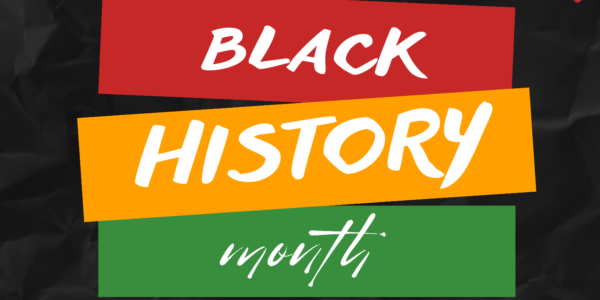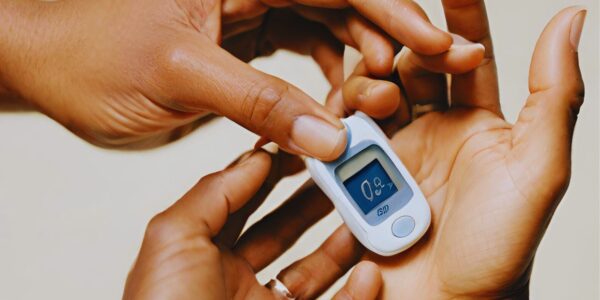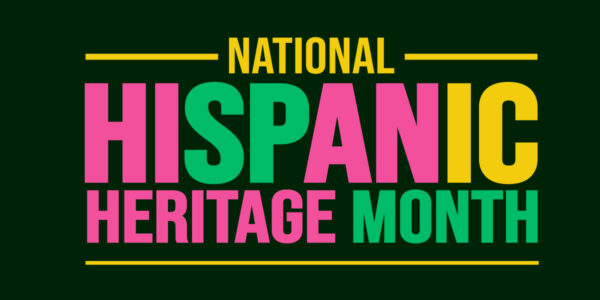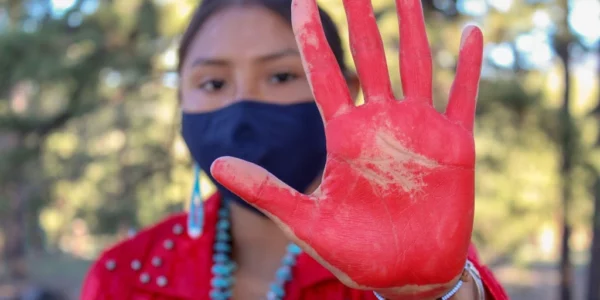By Gabriela Portillo
August is National Minority Donor Awareness Month (NMDAM). NMDAM was first established as a single week in 1996 to bring awareness and education to organ, blood, and tissue donation, specifically for Black, Indigenous, and People of Color (BIPOC)(1). In 2025, BIPOC individuals represent 61.3% of candidates on the organ transplant waiting list in the United States. Although more organ transplants are performed today than ever before, an estimated 13 people still die each day while waiting for a life-saving transplant(2,3).
Over the past 30 years, the percentage of organs that come from BIPOC donors has increased, yet disparities still persist across communities. Importantly, the percentage of multicultural donors has not kept pace with the growing need for transplants. While all groups have experienced growth in donation upon death, the percentage of living donors for some communities has decreased. Since 1995, Black individuals have seen a 1.9% decrease in the percentage of organs that come from living donation, while American Indian/Alaska Native and Pacific Islander populations have experienced declines of 0.6% and 0.3%, respectively (Table 1)(2). Living donation (usually a kidney or part of the liver) can can create better genetic matches between donor and recipient and can dramatically decrease the wait time for someone waiting for a transplant. Overall, across both living and deceased donation, BIPOC individuals continue to donate at much lower rates than White individuals. For example, data from 2017 showed that American Indian/Alaska Native individuals donated at just 28% the rate of Whites(4).
Table 1: Percentage of Living Donors, Deceased Donors and Transplants by Race/Ethnicity (* as of July 2025)
| 1995 Living Donors | 1995 Deceased Donors | 1995 Transplants Completed | |
| White, Non-Hispanic | 72.8% | 77.2% | 69.3% |
| Black, Non-Hispanic | 12.6% | 11.4% | 16.4% |
| Hispanic/Latino | 10.9% | 9.1% | 10.7% |
| Asian, Non-Hispanic | 1.9% | 1.4% | 2.6% |
| American Indian/Alaska Native | 0.9% | 0.4% | 0.8% |
| Pacific Islander, Non-Hispanic | 0.7% | 0.2% | 0.2% |
| Multiracial, Non-Hispanic | 0.0% | 0.0% | 0.0% |
| 2010 Living Donors | 2010 Deceased Donors | 2010 Transplants Completed | |
| White, Non-Hispanic | 69.6% | 66.5% | 59.7% |
| Black, Non-Hispanic | 11.7% | 16.7% | 20.8% |
| Hispanic/Latino | 14.3% | 13.8% | 13.5% |
| Asian, Non-Hispanic | 3.4% | 2.3% | 4.6% |
| American Indian/Alaska Native | 0.4% | 0.4% | 0.7% |
| Pacific Islander, Non-Hispanic | 0.2% | 0.1% | 0.3% |
| Multiracial, Non-Hispanic | 0.5% | 0.1% | 0.5% |
| 2025* Living Donors | 2025*Deceased Donors | 2025* Transplants Completed | |
| White, Non-Hispanic | 70.3% | 65.5% | 49.1% |
| Black, Non-Hispanic | 10.7% | 14.3% | 22.5% |
| Hispanic/Latino | 16.9% | 14.7% | 18.7% |
| Asian, Non-Hispanic | 3.8% | 2.7% | 6.0% |
| American Indian/Alaska Native | 0.3% | 0.9% | 0.7% |
| Pacific Islander, Non-Hispanic | 0.1% | 0.4% | 0.5% |
| Multiracial, Non-Hispanic | 0.8% | 0.3% | 0.8% |
The demand for organs in the United States regularly outpaces the supply, and this is especially true for multicultural communities. BIPOC individuals face higher rates of many chronic illnesses, such as heart failure, liver disease, and kidney disease, that may lead to end-stage organ failure and ultimately an organ transplant. Black individuals in the United States are four times more likely than White individuals to develop end-stage renal disease, while Hispanic/Latinx and Indigenous individuals are twice as likely(5). While transplants can and are often done between races and ethnicities, individuals who receive an organ from someone of their own race/ethnicity have been shown to have better long-term outcomes(6). This is due to specific genetic markers called human leukocyte antigens (HLAs), which are passed down from parent to child and impact how the body’s immune system will respond to a transplanted organ. People of the same race/ethnicity are more likely to also have similar HLAs, increasing the likelihood the body will not reject the organ(3,6).
As of 2022, more than 170 million people in the United States were registered to donate, however not all those who are registered will choose to or be able to donate. There are a number of factors that influence why BIPOC individuals choose to be donors including cultural or religious beliefs, knowledge about organ donation, access to healthcare, and mistrust in the healthcare system and organ donation process (4,6,7). Efforts to increase organ donation in BIPOC communities should take steps to address these factors. This can include working with faith-based organizations who can provide religious guidance and address concerns and myths around organ donation, collaborating with community members to develop education materials that are culturally-tailored and presented in native languages. Materials should also be adapted for different age groups, recognizing that organ donation is often a shared family decision in many multicultural communities(7,8). Healthcare professionals who participate in any step of the organ donation process should be provided cultural competency training related to death-related beliefs and rituals of the communities they work with as well as training in compassionate communication(7,8). In order to address mistrust, transplant coordinators and providers should make sure donors and donor families are well informed of every step of the process and have appropriate time to reflect and ask questions(8).
There is a clear and important need for more donors from multicultural communties. This month, we encourage you to take time to learn about organ donation and to start a conversation with your friends and family about this important decision Below are some resources to help you consider becoming an organ donor.
- About Organ and Tissue Donation https://donatelife.net/
- Facts About Organ Donation https://unos.org/transplant/facts/
- About Organ and Tissue Donation (Nevada) https://www.nvdonor.org/
- Race, Ethnicity & Donation https://donatelife.net/donation/organ-donation-race-ethnicity/
- Living Donor Resources https://www.kidney.org/kidney-topics/living-donation-resources
- Register as an organ donor in Nevada https://dmv.nv.gov/dlorgan.htm
- National Minority Donor Awareness Month https://americasblood.org/events/national-minority-donor-awareness-month/
References
- National Multicultural Action Group (2025). National minority donor awareness month (NMDAM). https://nmag1.org/national-minority-donor-awareness-month/
- Organ Procurement and Transplantation Network (2025). National data. https://optn.transplant.hrsa.gov/data/view-data-reports/state-data/
- Health Resources & Services Administration. (2025, May). Organ donation statistics. https://www.organdonor.gov/learn/organ-donation-statistics
- Kernodle, A. B., Zhang, W., Motter, J. D., Doby, B., Liyanage, L., Garonzik-Wang, J., Jackson, K.R., Boyarsky, B. J., Massie, A. B., Purnell, T. S., & Segev, D. L. (2021). Examination of racial and ethnic differences in deceased organ donation ratio over time in the US. archives of surgery (Chicago. 1960), 156(4), e207083–e207083. https://doi.org/10.1001/jamasurg.2020.7083
- National Institute of Diabetes and Digestive and Kidney Disease. (2025, September) Kidney disease statistics for the United States: Fast facts on kidney disease. https://www.niddk.nih.gov/health-information/health-statistics/kidney-disease
- Donor Alliance. (2024, August, 6). Does race matter in organ transplants. https://www.donoralliance.org/newsroom/donation-essentials/multicultural-groups-donation-does-race-matter-in-organ-transplants/
- Ginossar T, Benavidez J, Gillooly ZD, Kanwal Attreya A, Nguyen H, Bentley J. Ethnic/racial, religious, and demographic predictors of organ donor registration status among young adults in the southwestern United States. Progress in transplantation. 2016;27(1):16-22. doi:10.1177/1526924816665367
- Olawade, DB, Marinze, S, Qureshi, N, Weerasinghe, K, and Teke, J. Transforming organ donation and transplantation: strategies for increasing donor participation and system efficiency. Eur J Intern Med. (2025) 133:14–24. doi: 10.1016/j.ejim.2024.11.010











